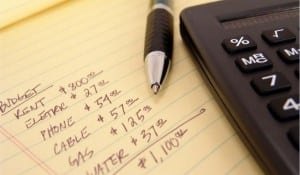
Saving money is like getting dressed- we all need to do it, but there are hundreds of ways that it can be done. Most people can benefit from a complete look at what they spend every month in order to see where they can cut back. Most of us don’t know where every penny goes, and it may be shocking when you see just where much of your discretionary income is being spent.
Step 1: Keep a Spending Diary
The first step is to use a small notebook or a smartphone app to record just what you spend every day. This includes cash, checks that you write and bill payments. Don’t forget to record direct debits that are taken out of your account for bills. If you do this for as little as two weeks, you will likely be surprised at what you see.
Step 2: Take an Honest Look at Your Spending
You may feel that you don’t spend much on impulse items, but when you take an honest look at where your money goes, you may find differently. A few specialty coffees each week, some convenience store items and a few meals out add up over the course of the week. When you see it there in black and white, you can imagine how much these purchases have been costing you each month and each year.
Often, too much money being spent on impulse items comes down to convenience. It’s far quicker to run into a convenience store than it is to head into a grocery store when you need an item or two. Of course, this convenience comes at about three times the price you’d pay in a grocery store.
To save money on spending each day, take a look at each of the things you bought and think about whether they were necessary. Were the items enjoyed? Could they have been bought for less elsewhere? In many cases, analyzing your spending can inspire you to create shopping lists that will keep you from many impulse purchases. If you’ve committed to a list, you won’t forget items when you shop and won’t be tempted with quick and expensive alternatives.
With a list, you’ll have stocked shelves and will be less likely to eat out because there’s “nothing to eat” in the cupboard. You also won’t be tempted by the checkout impulse items or by new things you see on the store shelves. If it isn’t on the list, just keep in mind that you didn’t really need it.
image credit
Instead of diary, journal, ALWAYS get a receipt & put ALL your receipts into one envelope. Once a week, take out the envelope and your checkbook, and look at what you spent the money on. Don’t carry much cash – $5 or $10. It really cuts down on impulse purchases of things you wouldn’t put on a charge or debit card because it’s too small. But when you have lots of money in your wallet, you’re more likely to whip out a $20 and buy that unnecessary fountain soda or stop at Starbucks.